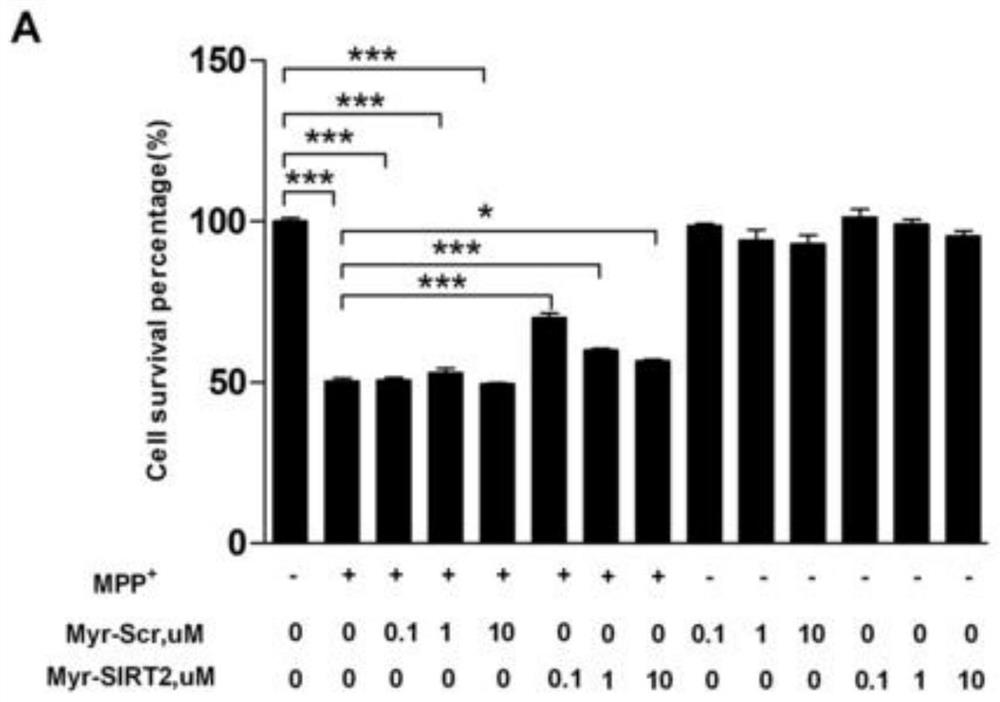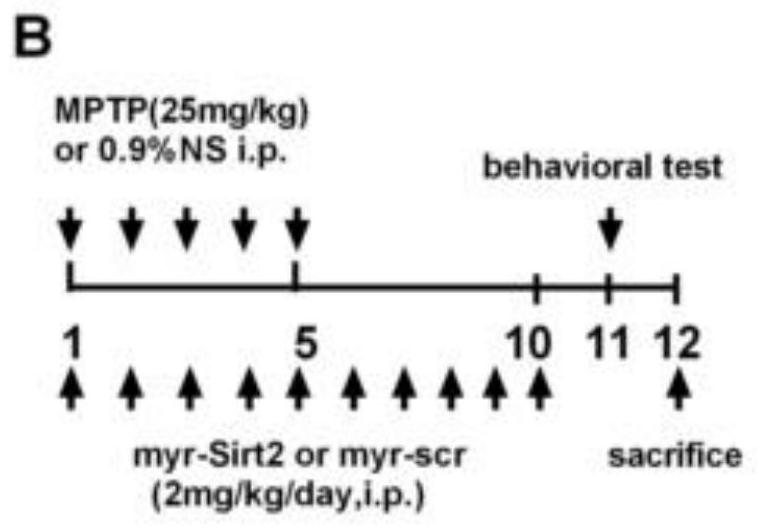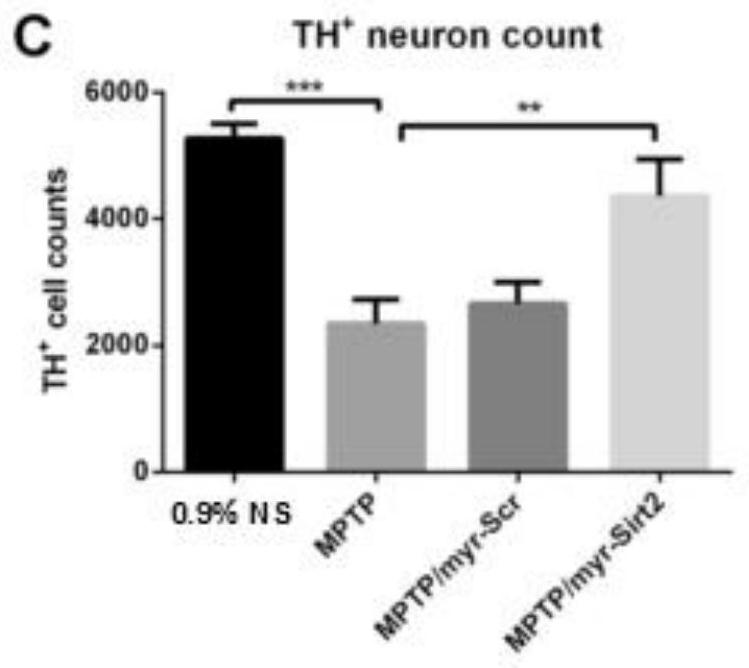Small molecule polypeptide and application thereof in preparation of medicine for preventing and treating Parkinson's disease
A technology of small molecule peptides and drugs, applied in the field of biomedicine, can solve problems such as unclear specific mechanisms, achieve the effects of improving exercise capacity, reducing death and movement disorders, and reducing the loss of dopaminergic neurons
- Summary
- Abstract
- Description
- Claims
- Application Information
AI Technical Summary
Problems solved by technology
Method used
Image
Examples
Embodiment 1
[0017] Embodiment 1 design polypeptide:
[0018] Containing SIRT2 protein Ser331 site and Ser335 site, the sequence is TSASPKKSPPPA twelve amino acid polypeptides (SIRT2 328-339 ), and combined myristic acid (Myristic acid, MYR) at the N-terminus of the short peptide.
[0019] The control peptide is SIRT2 328-339 The scrambled peptide (Scramble) of the peptide has a sequence of KTAPSAPKPPSS, and the N-terminus of the short peptide is also bound to myristic acid (MYR).
[0020] Entrusted to Kangwei Biotechnology Co., Ltd. to synthesize, the purity of the peptide can reach more than 95%.
Embodiment 2
[0022] Select SD rats that are 16-18 days pregnant, and take E16-18 rat embryos under aseptic conditions and place them in pre-cooled D-hanks solution. Forceps and ophthalmic scissors were used to peel off the mouse’s scalp to expose the skull. The skull was peeled off with sharp forceps along the sagittal suture of the skull and the spinal cord, and the cerebral cortex was exposed and divided into two with sharp forceps. The cerebral cortex was separated under a dissecting microscope, and the meninges and blood vessels were peeled off. , hippocampus, and midbrain were placed in another clean glass dish filled with pre-cooled D-Hanks solution, and then the cortex was digested in a 37°C incubator with 0.125% trypsin. After 2 minutes, the digestion situation was observed and further confirmed. time. Then the tissue was aspirated with a pipette tip and transferred to a centrifuge tube containing serum to terminate the trypsin digestion. After blowing with a 5ml pipette for 20 ti...
Embodiment 3
[0024] Take 60 healthy adult C57BL / 6 male mice of about 25g, and randomly divide them into four groups. One group of mice is injected with normal saline, and the other three groups of mice are intraperitoneally injected with 30mg / ml of 1-Methyl-4-phenyl-1 once a day , 2,3,6-tetra-hydropyridine hydrochloride (MPTP) was used for modeling and injected continuously for 5 days. At the same time as modeling, a group of MPTP groups were injected with MYR-Scramble peptide, and a group of MPTP groups were injected with MYR-SIRT2 328-339 Peptide, 10 consecutive days, once a day, 2mg / kg. One day after modeling, the mice were sacrificed, the whole brain was fixed and dehydrated, and the substantia nigra brain slices were cut, and the number of dopamine neurons in the substantia nigra of the mice was detected by immunofluorescence. The experimental process is as follows figure 2 As shown, the experimental results show that intraperitoneal injection of MYR-SIRT2 328-339 Peptides can redu...
PUM
 Login to View More
Login to View More Abstract
Description
Claims
Application Information
 Login to View More
Login to View More - R&D
- Intellectual Property
- Life Sciences
- Materials
- Tech Scout
- Unparalleled Data Quality
- Higher Quality Content
- 60% Fewer Hallucinations
Browse by: Latest US Patents, China's latest patents, Technical Efficacy Thesaurus, Application Domain, Technology Topic, Popular Technical Reports.
© 2025 PatSnap. All rights reserved.Legal|Privacy policy|Modern Slavery Act Transparency Statement|Sitemap|About US| Contact US: help@patsnap.com



